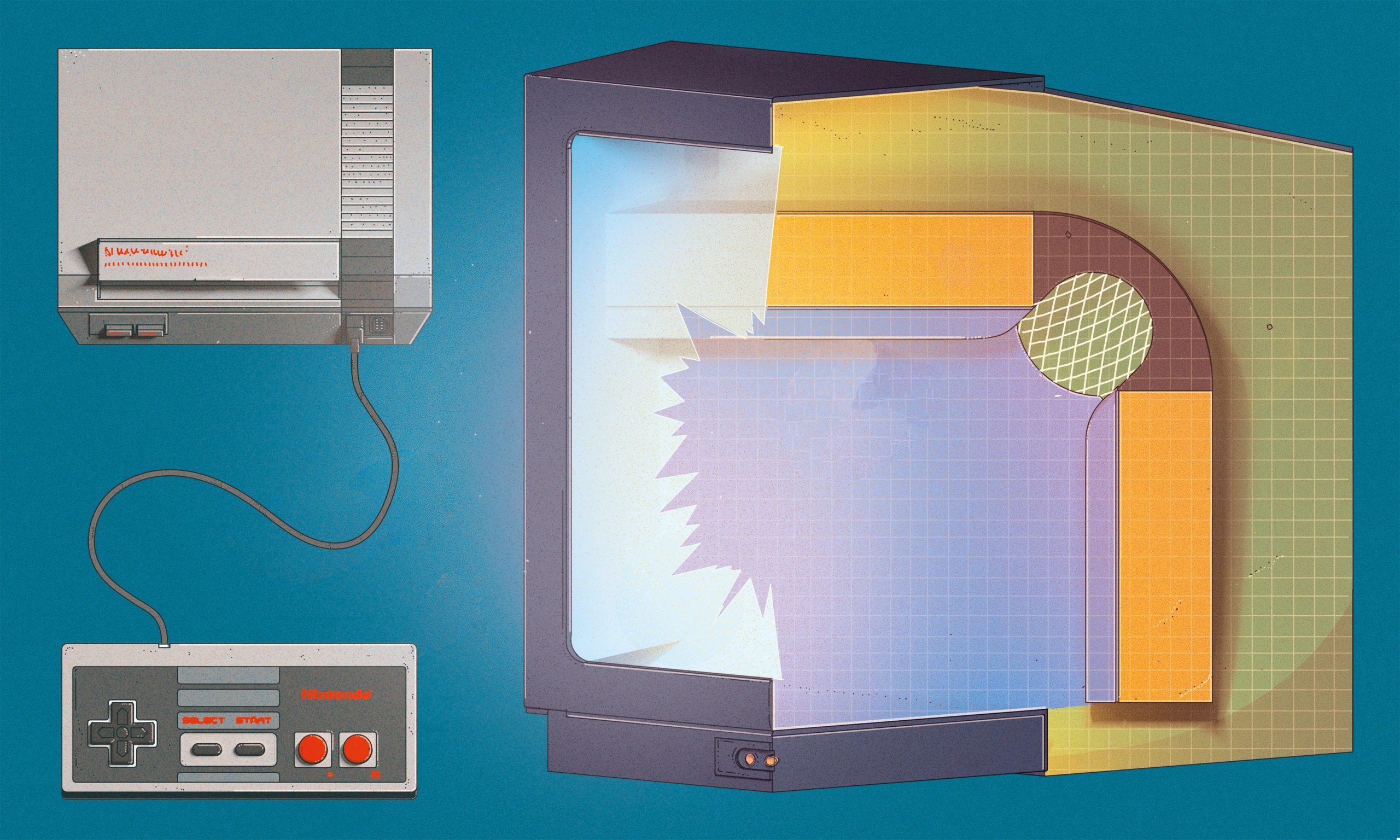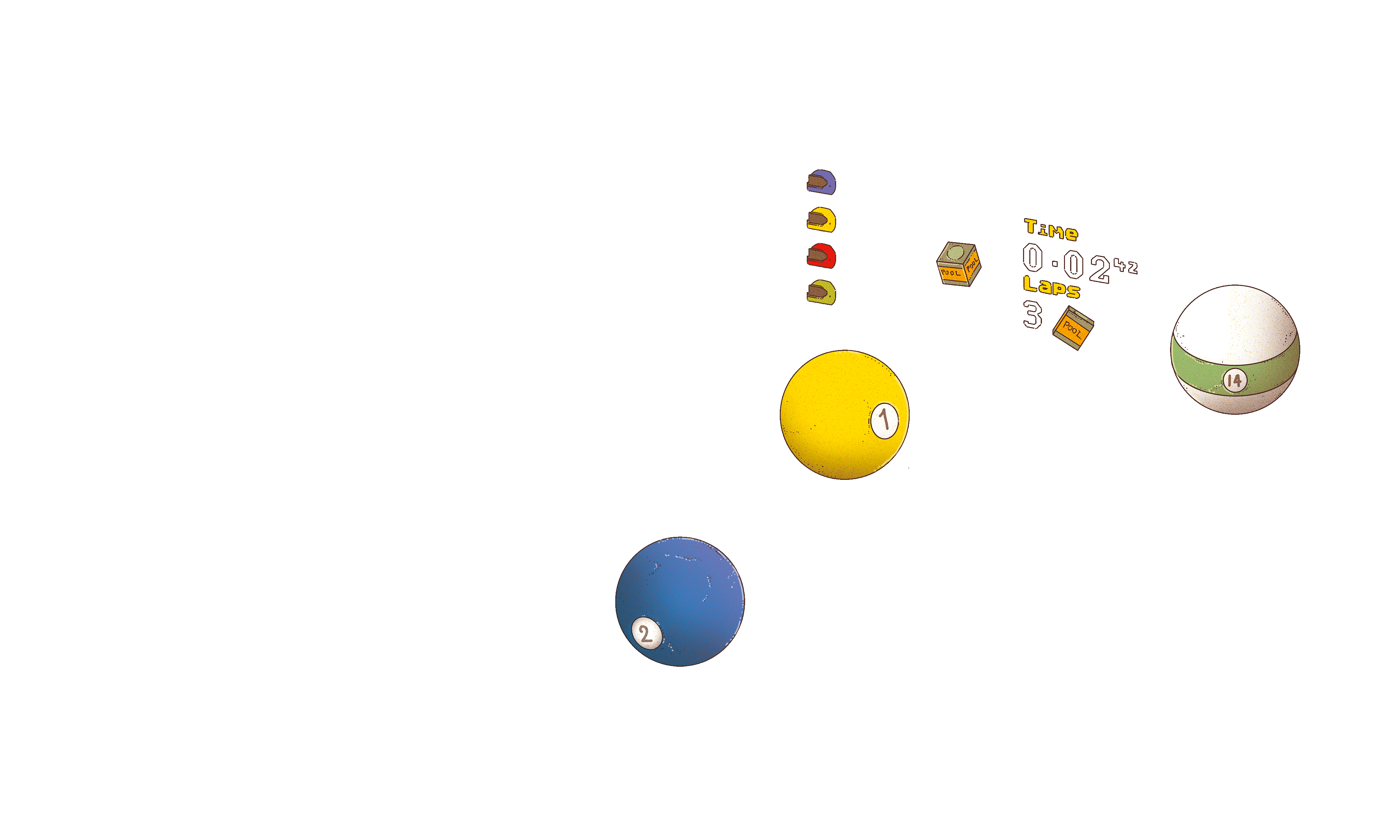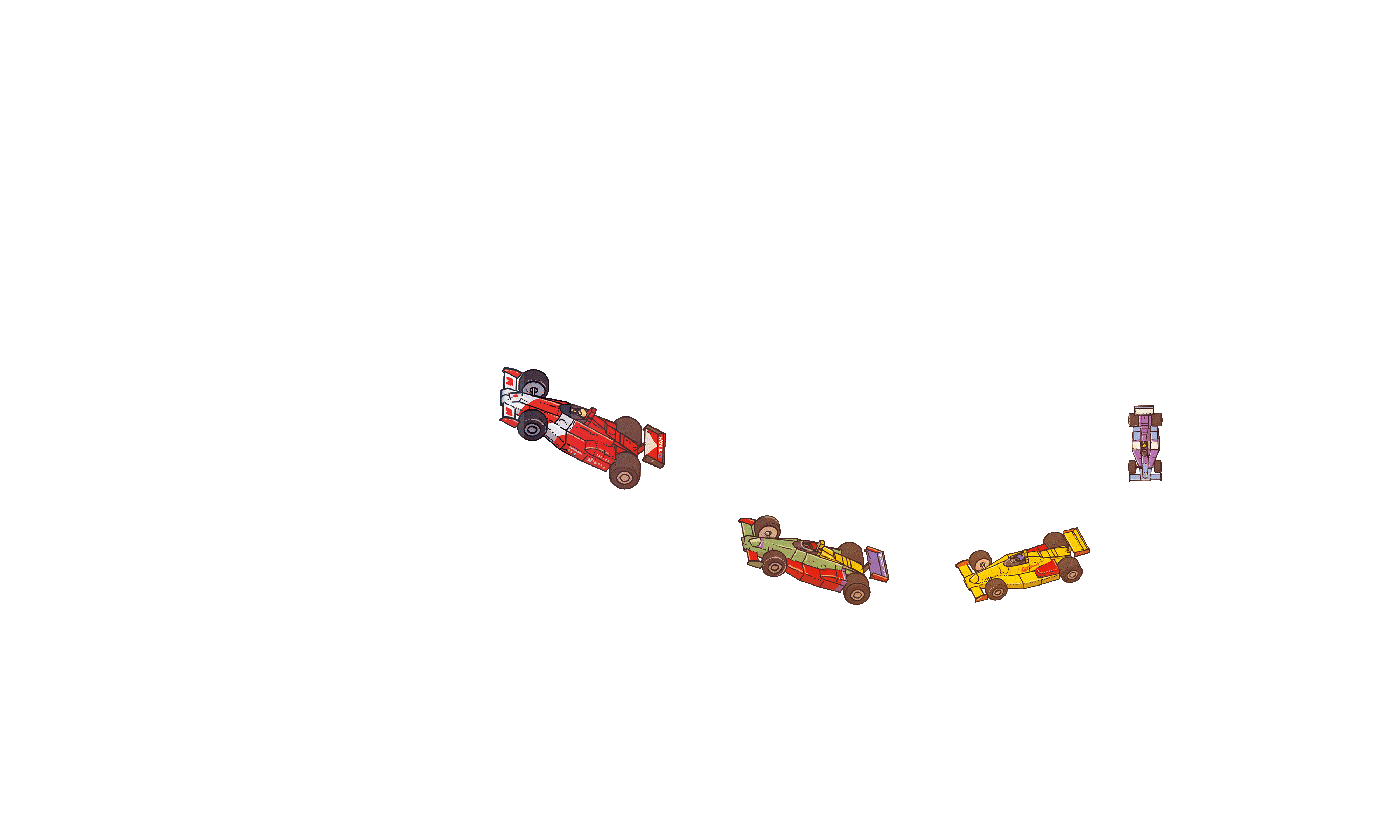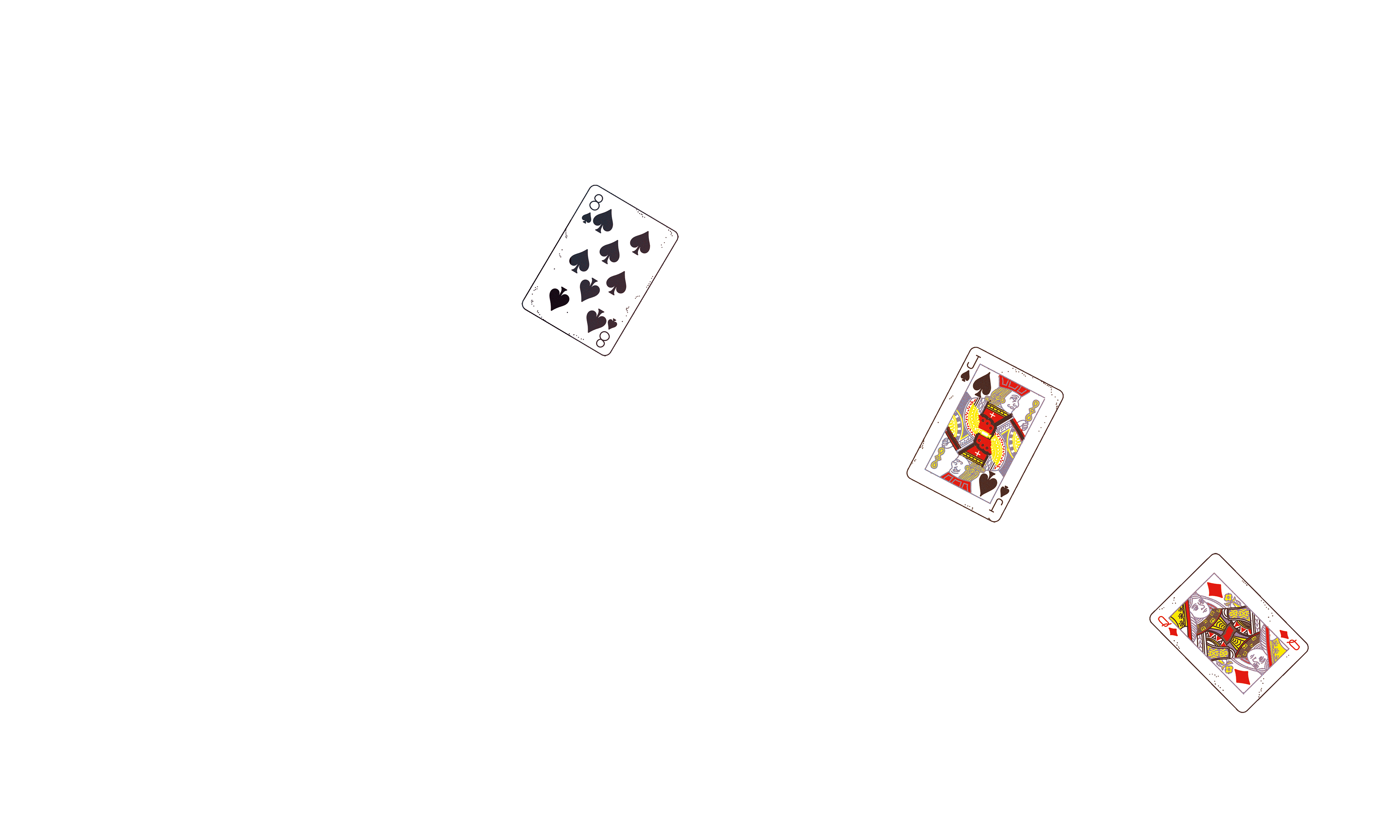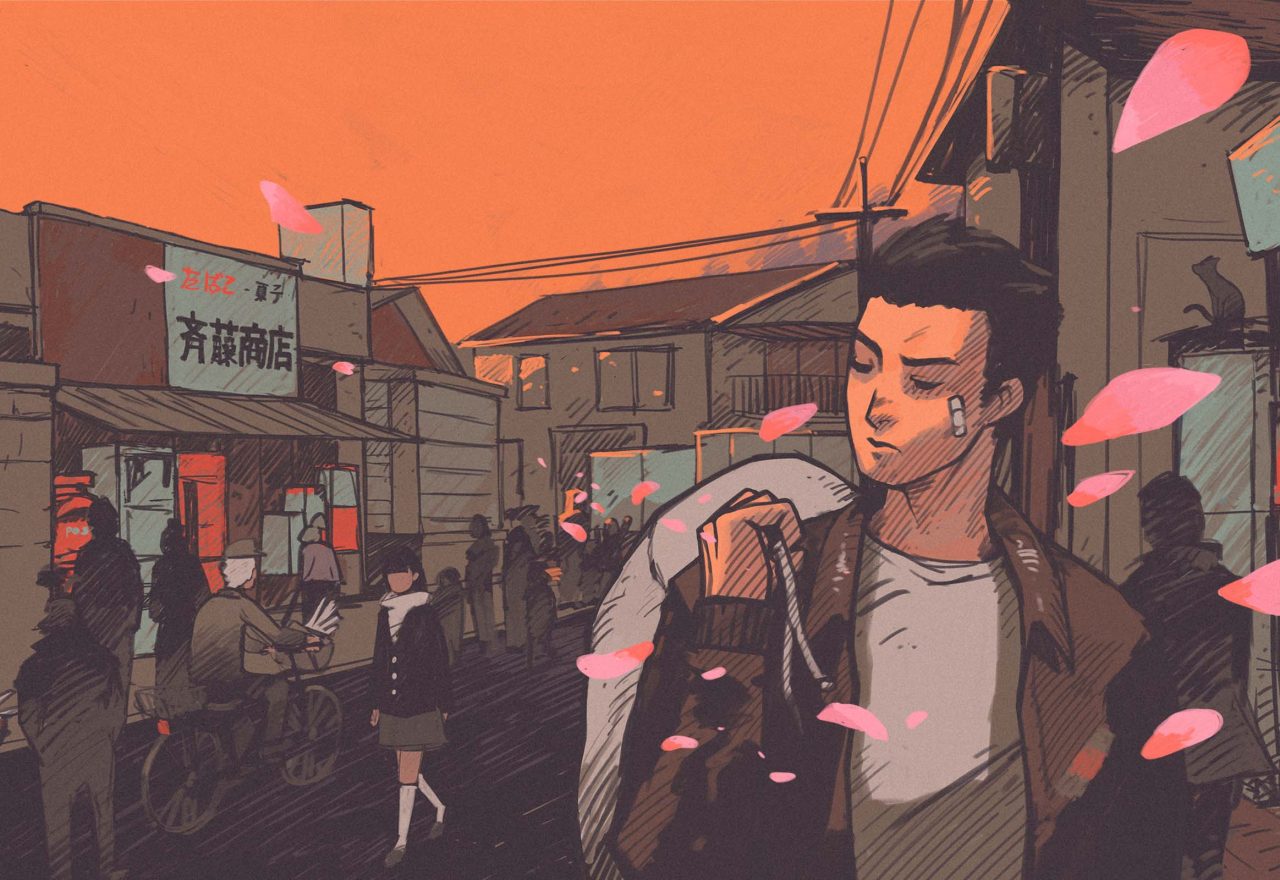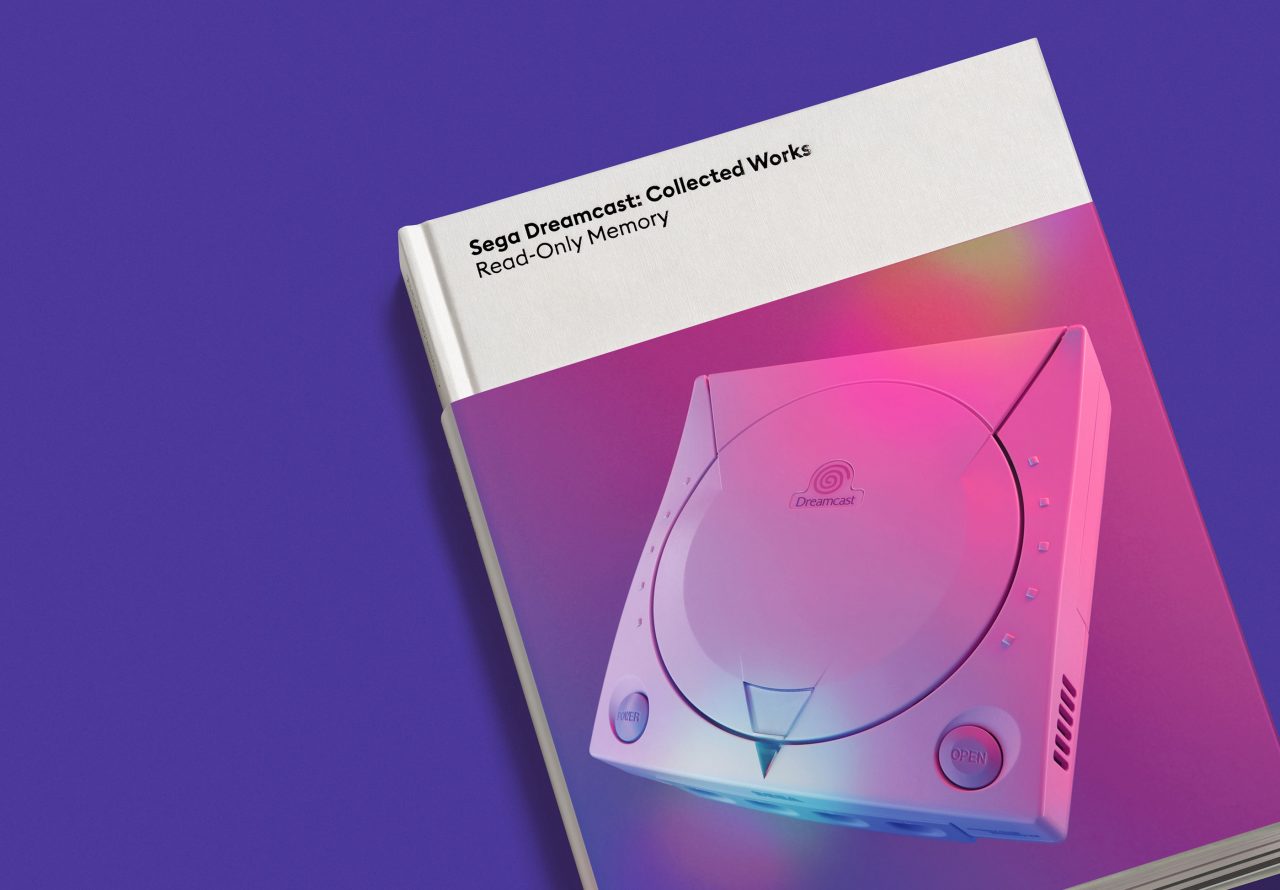The Making of Micro Machines
How Codemasters took the hit toy line to the top of the videogame charts
The dawn of the 1990s was a time of huge upheaval in the British games industry. Most of the well-known studios – the likes of Sensible Software, The Bitmap Brothers, Elite Systems, Gremlin Graphics and Hewson Consultants – had specialised in the home computer market, progressing through successive generations: the ZX81 and VIC-20; the Commodore 64 and Spectrum; the Amiga and Atari ST. But the irresistible rise of the Nintendo Entertainment System, and the promise of the SNES and Sega’s Mega Drive, heralded a new era of console gaming, of closed systems replacing open architectures, and of global marketing and distribution. It would require a radical shift in approach, there would need to be entrepreneurism and chutzpah, but the outlook was simple: adapt or die.
At the spring Consumer Electronics Show in 1989, Southam-based publisher Codemasters found itself on a stand next to the dominant force in the industry: Nintendo. The Japanese company was still showing off the NES, which by then was starting to show its age, but while driving through the US, Codemasters founders David and Richard Darling had been amazed to see the console’s games and accessories being sold in every gas station they stopped at. ‘It was the first time we’d seen games go completely mass market,’ recalls David. ‘We knew we needed to find a way to develop games for this platform’. Since 1986, the studio had been churning out budget Commodore 64, Spectrum and Amstrad games such as Dizzy, Super Robin Hood and Grand Prix Simulator – it had little experience in the console sector, but didn’t see that as a barrier. ‘We actually visited the Nintendo stand, but they basically said they were too busy to talk to us,’ he recalls. ‘We thought, “Okay, this is going to be difficult.”’
We actually visited the Nintendo stand [at CES], but they basically said they were too busy to talk to us … We thought, ‘Okay, this is going to be difficult.’
Despite Nintendo’s disinterest, the Darlings were determined to start working on NES titles as soon as possible and so experienced coder Andrew Graham, who had started making and porting games for Codemasters while still at school, was given the job of porting Treasure Island Dizzy over from the Amiga. There was just one problem: without an official license, Codemasters couldn’t get its hands on a NES development kit, the essential piece of equipment studios needed to produce games for the platform. But that wasn’t going to stop them.
‘Ted Carron, who had written International Rugby Simulator for Codemasters, was very good with hardware so he reverse engineered the NES and built a dev kit,’ explains Graham. ‘It was a circuit board that plugged into the console port and, in the first iteration, a cable went from that into a Commodore 64, and then the C64 had a cable that went into my PC. We were using the C64 PDS (programmers development system) software and it was the first time I’d used a cross compiler, which is where you develop on one machine and port it to another. Ted sent it up to Blairgowrie in Scotland where I was living with my parents and it seemed incredibly elaborate. But he phoned me, talked me through setting it up and miraculously it worked first time.’
The Darlings were impressed with Graham’s work on the port and so set him to work on an original NES project. ‘I knew the C64 inside out and the NES has the same processor so, in some ways it was very similar,’ says Graham. ‘The NES was character based, it had sprites the same as the C64, it was a bit faster. You could only access 64k at a time, though, so we had to bank in and out of memory buffers; the sprites were all 8×8 and you had to join them together to make anything bigger. There was definitely a look to NES games – you could only have a maximum of eight sprites on a line at any time, so the sprites would flicker, but people got used to that.’
The first job was to decide on a project. As David explains, ‘We used to give the programmers a lot of creative freedom so I just said to Andrew, “What do you want to make?” and he said, “A racing game”. We came up with the Baja beach buggies in California, where they race on the sand dunes, so he said, “Okay, I’ll make a beach buggy game.”’ Graham’s key influence was an old Atari title named Rally Speedway, a scrolling, top-down perspective racing game, which offered an exciting head-to-head mode where the camera always followed the race leader – if the opponent fell too far behind, they’d get a time penalty and the race would re-start.
We used to give the programmers a lot of creative freedom so I just said to Andrew [Graham], ‘What do you want to make?’ and he said, ‘A racing game’.
This concept appealed to Codemasters for technical reasons: having two players compete on one full screen would avoid the technical hurdles of a split-screen display, an extremely challenging prospect on the limited NES hardware. But that wasn’t all. The studio had always recognised the social appeal of gaming and often experimented with different forms of multiplayer functionality. One of its biggest hits, BMX Simulator for the C64, had supported four players – two with joysticks and two using the keyboard – and the company would later invent the J-Cart, which added two extra joypad ports for Mega Drive titles such as Micro Machines 2: Turbo Tournament and Pete Sampras Tennis.
In Micro Machines then, players are awarded a point if they get over a screen’s length ahead of their competitor; then the cars are placed together again and the race re-starts until one player gets eight points. As the courses are so challenging, it’s never that long before someone falls behind or flies off the map, so players are constantly being placed together – and this became part of its appeal. The game is a weird mix of driving, combat and survival gameplay, and that made it stand out. ‘Racing games are a bit boring when someone is half a lap ahead of the other person and you don’t see them,’ says Darling. ‘In Micro Machines there’s usually only 20 seconds of racing before you’re pulled back together so it’s always neck and neck. The game maximises the competitive nature of racing.’ Graham also enjoyed the tactical ramifications of the system: ‘You get this excellent sort of tension where the closer you get to the edge of the screen, the less you can see ahead, so there’s a trade-off there in being the fastest racer.’
For the game, provisionally titled ‘California Buggy Boys’, handling was also a vital factor and one of Graham’s initial challenges was altering the sand-based dynamics for the new household domains, providing just the right about of drift to be challenging yet fun. He’d written a Commodore 64 game years before called Hoverbike, a top-down racing game, which was never released, but taught him the basics. ‘I guess that’s where I learned how to do the physics,’ he says. ‘To get nice smooth skidding, it wasn’t trivial but it wasn’t super hard.’ Darling recalls how Graham obsessed over this aspect of the game. ‘Andrew is a real perfectionist,’ he says. ‘When he was working on Psycho Pinball I think it took him two years to get the ball movement how he wanted it – he spends forever on the tiniest details. So he was working on the beach buggy for months, trying to get the handling so that when you jumped over a sand dune and landed, the car would skid just the right amount. He wanted the player to get a good feeling from every single micro movement. The way he makes games is all about feel.’
While Codemasters was waiting for ‘California Buggy Boys’, the Darling brothers and Ted Curran were toying with another idea. They wanted to release their NES games on a new sort of cartridge, which featured switches for the player in order to alter the difficulty of the game or add new lives or weapons. But then the team’s thinking evolved: if it was possible to build a cartridge with this feature-set for their own games, why not build an interface that sits between any game and the console, allowing players to input cheats and access new features with their existing game library. The result was the Game Genie cheat cartridge, which Codemasters demoed to its Canadian games distributor Camerica. Seeing the potential, CEO Dave Harding suggested Codemasters pitch it at Lewis Galoob toys in the US, which was looking for new toy ideas.
‘The guy who ran their R&D was called David Small – he was famous for inventing the animatronic toy Teddy Ruxspin,’ explains Darling. ‘Galoob brought him in to look for new inventions and David Harding demonstrated Game Genie to him and he really liked it. So their CEO David Galoob, the son of Lewis Galoob – gave it to his son and he thought it was amazing. That’s how that deal came together.’
While over in the US inking the deal, the Darlings noticed the success of one of Galoob’s major lines, Micro Machines – the tiny toy cars that came in a variety of themed playsets. Propelled by a memorable series of TV commercials featuring world fast talking record holder, John Moschitta, the series was a phenomenon, the sets packing out the shelves of every Toys“R”Us in the country. David Harding, CEO of Codemaster’s Canadian distributor Camerica, tried to convince Galoob to make a tie-in videogame, but the company wasn’t interested in joining the games industry – so spying an opportunity the Darlings asked for the licence to develop games themselves. Galoob agreed. The best part was, they already had a project in development that could be re-skinned to fit the brief: ‘California Buggy Boys’.
Graham was reluctant about the swerve in direction at first, but went along with it, although his initial vision for a Micro Machines game was a little different. ‘At the time I was thinking of putting the toy cars in realistic environments that were suitable for each range,’ he says. ‘So the tanks would go in a battlefield, the sports cars on a racing track – that seemed the obvious thing to do. But we were talking to Nigel Fletcher who used to do illustrations for Codemasters, he did all the Dizzy covers, and he suggested why don’t you have them racing around kitchen tables? It simply hadn’t occurred to me.’
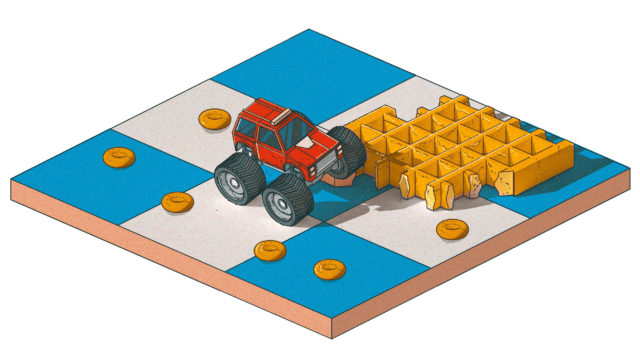
Graham was put together with artist Paul Perrot and like several other teams at Codemasters, the two of them worked out of a Portakabin in the grounds of the farm where the studio was founded. They began brainstorming recognisable household locations that would be flat enough to race toy cars on. ‘It turns out that there’s not as many as you’d think, so there were quite a lot of table tops,’ says Graham. ‘We also tried to keep to locations where kids would be playing, so there are school desks and breakfast tables.’ The line up included a bathtub, breakfast table, school desk, garage floor, sand pit and garden patio, all filled with witty scenic flourishes – rubber ducks, cereal boxes, oil cans and rulers forming precarious bridges. The ingenious element was the way the team used contextual objects as conventional racing game obstacles – spilled ink became an oil slick, puddles of milk became water hazards, playing cards were ramps. In this way the miniaturised worlds feel tactile and immersive, despite the limitations of the NES hardware.
‘The most challenging part was cramming it all into the cartridge,’ says Graham. ‘We had 128k which seemed really luxurious until we got going. I think you had one character set of 256 characters for the sprites and another one for background which was very limiting, and you could flip graphics but you couldn’t rotate them so I had to have loads of different sprites for all the rotations of the cars. Going back and playing it now, the environments look really rough because there just wasn’t that much to work with. The character-based nature of the graphics meant that large, curved things would take up most of the character set, and so there would be more repetition. We had to think a lot about our character budget, and where we wanted to spend it.’ Perrot created the art using Deluxe Paint, the standard bitmap graphics editor of the era, but Codemasters also developed proprietary software for managing the NES system’s limited colour palette.
While the focus of the game was clearly the head-to-head option, Graham also included a single-player Challenge mode, where players competed against computer controlled drivers over a series of races. This meant developing some kind of AI system with the game already pushing at the limits of the cart capacity. However, Gavin Raeburn, the coder behind Spectrum and C64 driving game, Rallycross Simulator, had an economical solution. ‘Essentially you cover the entire map in an invisible layer of arrows which tell each car in which direction to drive whenever it’s in that part of the map,’ says Graham. ‘So there are arrows all along the track itself, and there are arrows off the track which point back to it. That’s about as far as the AI goes. What I’ve found over the years is that people read a lot more into it!’
Essentially you cover the entire map in an invisible layer of arrows which tell each car in which direction to drive whenever it’s in that part of the map … That’s about as far as the AI goes. What I’ve found over the years is that people read a lot more into it!
According to Graham, the game also used a rubber banding system to hold the AI drivers close to the player, and each computer car was ranked in terms of top speed, acceleration and grip with the character Spider being the fastest.
Initially uncertain about how popular such a multiplayer-focused game would be, Graham and the team first included a few hybrid modes to provide more choice. This included a version of the head-to-head mode which also featured AI drivers competing for the points. Unfortunately, human players could always work out little cheats and shortcuts to get ahead of the AI cars and earn free points. ‘Sadly the AI wasn’t up to learning from its mistakes,’ says Graham. The team also looked at offering a handicapping system in multiplayer mode so that the more skills player could choose a slower car. This didn’t work because as soon as the two players arrived at a straight, the competitor with the faster car was guaranteed a point.
‘At one point we even developed a system for linking two consoles together in a basic form of networked play,’ reveals Graham. ‘There were audio jack sockets in the cartridges, and you could link the consoles together with a simple audio cable. I remember we had that on display at the CES show in Las Vegas.’ What happened to that intriguing addition? ‘How many people would actually want to lug their NES and TV round to a friend’s house to do the link-up?’ asks Graham. ‘Plus, the multiplayer experience using the link up was actually less fun than the local single-screen mode. You would be racing on your own most of the time, with your opponents a long way off the screen. The game wasn’t really made for that kind of gameplay. The tech might have been more useful for a Pole Position style racing game, with the camera behind the car’.
In any case, cartridge production would be another challenge for Codemasters. Nintendo equipped its console with the 10NES lock chip, an integrated circuit that required each game cart to offer up the corresponding key in order to load. But the lock and key were proprietary and although copying them was easy, doing so would infringe Nintendo’s patent. Codemasters needed a workaround. Fortunately, Camerica was already working with a Taiwanese circuit manufacturer named Dragon Chen on the Game Genie carts – his engineers figured out a way to crash the lock so that the game could run unimpeded.
‘It was a different technical approach to opening the lock that didn’t infringe the patent,’ recalls Darling. ‘But it didn’t always work – it worked 95% of the time, so there were always people in the US who complained the game was faulty. David Harding felt the numbers were low enough that it wasn’t a problem, but it wasn’t how we wanted to handle it in Europe – we wanted 100% compatibility. We looked at the way Game Genie worked, it sat between the game and the console, so we thought, why don’t we just make our games in the same way, put them between a licensed Nintendo game and the console and then the key can still speak to the lock and that way we don’t infringe the patent.’
This wasn’t the only technical hurdle that Codemasters had to jump before distribution. Famously, the company was on the verge of mass manufacturing its European cartridges when a serious bug was discovered in the code. ‘It turned out that if you pressed brake or reverse on the starting grid the game just crashed,’ says Graham. ‘QA wasn’t what it is now and nobody had ever tried that before. Codemasters had already manufactured tens of thousands of ROMs with this bug in, so in order to get it to work, they put some of the Game Genie hardware into the cartridge which would change the one byte of the code that contained the bug – that’s how they fixed it.’
It turned out that if you pressed brake or reverse on the starting grid the game just crashed … QA wasn’t what it is now and nobody had ever tried that before.
The release of the game began in the winter of 1991 with North America getting Camerica’s shiny silver switch cartridges; Europe came later via Codemasters’ pass-through carts, which required another licensed title to run. Reviews were positive but sales were initially sluggish. ‘I don’t think the game reached its full potential in the US and Canada,’ says Darling. ‘It was quite hard selling unlicensed games because even though Nintendo couldn’t legally stop you, they pulled every lever possible to get the shops not to list you. In Europe, it took a few months to get going due to the fragmented nature of the distribution, but it did eventually have a lot of chart success. It went to number one in 27 countries.’
Codemasters was keen to capitalise on its new console hit and by this time the Sega Mega Drive was leading the market, thanks to its 16-bit processor and aggressively hip marketing. It was the natural next destination. Charlie Skilbeck was a young coder, who like many Codemasters programmers, had been working from home on small projects for the company. He’d just completed a conversion of Super Grand Prix from the Spectrum to the Amiga and Atari ST, which meant he had experience with top-down racers and the same 68000 processor present in the Mega Drive. Codemasters offered him an in-house job to convert Micro Machines to Sega’s machine and he took it. ‘It was crazy,’ he recalls. ‘The company was very young, the average age of the employees was early 20s. I remember a whole bunch of us rented a house in Leamington Spa – I feel really bad for the landlord, we didn’t treat it well at all. That was Codemasters in the early 1990s: lots of youngsters, having fun in all sorts of ways, but also working hard’.
When Skilbeck arrived, he walked straight into a familiar problem: Codemasters had no license to develop for the Mega Drive. The Darlings refused to sign the restrictive deal which required publishers to supply game code to Sega which would then manufacture the carts and sell them back to the publisher at a premium. Codemasters wanted to make the carts itself and then launch the games at a cheaper retail price point. The company’s technical wizard, Rich Aplin, who had worked closely on the Game Genie, was investigating the console hardware to find a way of developing games and producing carts without infringing any Sega copyrights, but this was a legally fraught issue – Sega of America was in the process of suing games publisher Accolade for doing exactly this.
Indeed, later on, when Codemasters announced its plan to release Micro Machines for the Mega Drive as an unlicensed game, Sega Enterprises launched breach of copyright action against the studio. In news reports at the time Codemasters press officer Rich Eddy claimed the company was producing the games legally and attacked Sega for preventing publishers from independently producing games, leading to higher prices for consumers.
While the corporate machinations rumbled on, Skilbeck was quietly beginning work. ‘The remit for Micro Machines on the Mega Drive was: “Don’t change anything, just put in nicer graphics,”’ he says. ‘If you know how to write Amiga games then writing a Mega Drive game is relatively straightforward – it had hardware sprites and hardware playfields, it was set up to make it easy to write games on.’
Skilbeck spent some time with Graham, learning about how the game had been designed, then he set about extracting the graphics straight from the original version. ‘The NES had a horizontal screen resolution of 256 pixels, the Mega Drive was nominally 320,’ says Graham. ‘However, the Mega Drive had a 256 pixel mode, so we said early on, we’ll use that and so the aspect ratio and all the graphics were functionally identical. Then we just gave the artist the NES graphics and said, “Do what you want, go nuts”. The limitations in terms of number of sprites on a line, the number of characters, all that sort of went away. The Mega Drive allowed 16 colours per cell, instead of four and so on, to the artists had a much freer hand.’
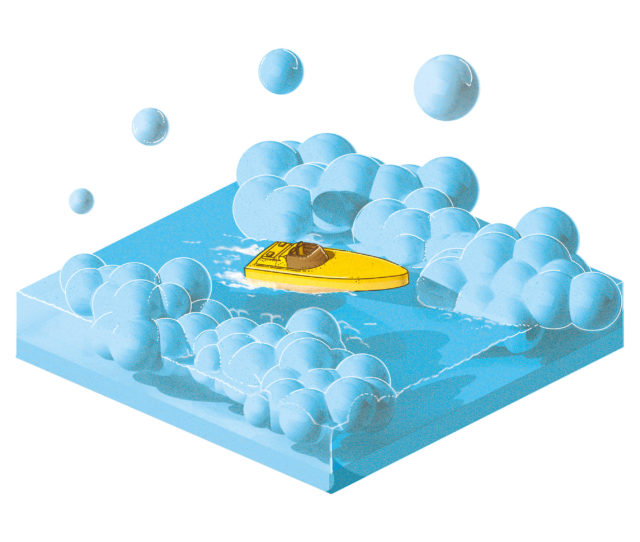
The result was a much richer, more vibrant set of environments and car models. But in terms of gameplay, Skilbeck claims to have kept exactly to his original brief: to provide an exact port. ‘The functionally of the game is identical,’ he says. ‘It uses the same logic, the same maps, it uses the same AI, the same hidden layer of arrows. It’s unchanged.’ This appears to contradict the experience of players who feel the handling in the Mega Drive versions is more forgiving than on the NES. According to coders who worked on later ports, the car sprite in Micro Machines had 32 rotations to ensure a smooth handling experience, and if the player spent too long not steering, or appeared to be heading wildly in the wrong direction, the game would subtly lock the wheel to the closest 45-degree angle, nudging you back on track.
Skilbeck concedes this effect could be more pronounced on the Mega Drive version, leading it to feel less drifty than the NES original. ‘It’s possible we made tweaks to the handling,’ he says. ‘The NES is an 8-bit machine, so while we reimplemented it in the spirit of the original, the 68000 has 32-bit registers, so I didn’t have any of the restrictions Andrew faced. I may have thought, “Screw it, I’ll do it an easier way.”’
As the project was wrapping up, Sega and Codemasters worked out their legal difficulties. Codemasters became a licensed developer, but retained the right to manufacture its own cartridges. The ROMs were manufactured in Taiwan, but the carts were assembled at Codemasters HQ. ‘They set up a machine to do it,’ says Skilbeck. ‘They ordered all the cases and stickers and they had a production line – they employed local women from Southam to sit there and test them. There were 20 women in a row and as these carts came off the line they would jam each one into a console and boot it up and if it worked, it would go in the packaging.’
Meanwhile, Fred Williams, a veteran coder at the Codemasters affiliated studio Big Red Software, had pitched to produce a Game Boy port of the game. ‘I remember putting together a parallax scrolling tech demo for the Game Boy very early on,’ he says. ‘There were no vehicles, just a pretty scrolling table over a tiled floor. I made it very clear I wanted to do the port – this was despite Codies not actually having committed to publish Game Boy games at all’.
However, Big Red founder Paul Ranson was impressed with the demo and green lit the project. Like Skilbeck, Williams worked directly from the NES source code, but the limitations of the GB hardware required some significant re-thinking. ‘The screen has less pixels, so while the Game Gear guys apparently opted to keep everything NES/Mega Drive-sized and position the player at the ‘back’ of the screen for visibility purposes, we took the “scale everything down” approach.’
To make this process work, Williams relied on one eccentric quirk of Graham’s original design – the map tiles are 12×12 characters, rather than a more usual power-of-two number. ‘It was such a fundamental decision for the gameplay,’ recalls Graham. ‘It determined the size of the track how much you could see ahead. I wasn’t happy with 16×16, so I went for 12×12’. What he didn’t realise was that this decision made it much simpler for Williams to scale down the game to the GB screen.
There were other limitations to contend with. As Williams explains, ‘In every frame, the game sends one column and one row’s worth of map data, the sprite positions and characters, and four bitmapped characters’ worth of parallax background to the display. The scrolling speed never hits over eight pixels per frame. The Game Boy also has a silly “limited number of sprites per row, and the top-left-most get to be in front” system, which makes the vehicle shadows interesting when they jump – and in the unlikely event that all the cars are lined up horizontally and jumping at the same time, they get very flickery.’
To retain the original game’s focus on the head-to-head mode, Williams allowed to players to complete against each other on a single Game Boy, one using the D-pad, the other using the A, B and Select buttons for right, left and brake, with acceleration handled automatically. The game also supported the two-player link cable and the Nintendo four-player adaptor (‘Which we had to reverse engineer with the ever-faithful logic analyser,’ says Williams). Work on the port ran from September ’92 to May ’93, but was unreleased for a year before Ocean agreed to publish it. ‘The Ocean logo in the game is a programmer graphic… by yours truly,’ Williams points out.
Big Red Software also handled the PC conversion of the game, with coders Jon Cartwright and Lyndon Homewood doing the brunt of the work. ‘One of the key differences between the console ports and PC was that the PC didn’t have a character mapped display, it was fully bitmapped and there was no hardware scrolling, so the whole screen needed to be re-rendered every frame. And of course the resolution was higher. I think the minimum we supported was 320×200, so there was a hell of a lot more to update every frame.
‘Sure, the PC had a better processor and more RAM, but we didn’t get to use the nice tricks of the character-based consoles, which could fake effects such as parallax scrolling. And this was back in the DOS days, so there was a world of fun with compatibility on graphics cards, sound cards and controllers. If I remember rightly, some keyboards didn’t accept many simultaneous inputs which had implications for multiplayer. On the audio front we had to cater for PCs that only had the built-in speaker, as opposed to a dedicated sound card. I remember a reasonable amount of work went in to trying to have some engine sounds that were at least representative.’
And while the fully bitmapped PC visuals did away with limited tile sets and avoided the flickering and dropping-out that afflicted hardware sprites in the console versions, the downside was that the frame rate was nowhere near as smooth, or as consistent. As Cartwright concedes, ‘It’s really noticeable on the bathtub races where you go under the soap rack or through a tube because we were drawing a background, then the car sprites, and then the foreground – and back then there were just so many variations in PC hardware that could affect your game performance.’
Although the PC version avoided the legal issues that had blighted the release plans for several console ports, there was one self-inflicted moment of controversy involving the breakfast table map. ‘We took some liberties with the cereal box and gave it the name “CHODS”, which is slang for shit. That even made it into some of the PR screenshots. We did change before release though, and I think it shipped with the brand “CHOCS”. It was for the best really.’ This penchant for adding jokes into the scenery continued into the PlayStation version, according to artist Toby Eglesfield, ‘With the increased memory I got to draw some schoolbook covers that were a wry comment on schoolbooks of the ’80s and a holiday novel called The Costa Love appeared on picnic blanket.’
When you think about movies like The Incredible Shrinking Man and Honey I Shrunk the Kids, we just seem to be intrigued by the idea of being tiny – maybe that’s why the toys did so well in the first place.
There were other ports – to the Amiga, Game Gear, even the Philips CDi – and the success of the game ensured multiple sequels, with Micro Machines V3 on PlayStation taking the franchise into the world of 3D polygonal visuals. This turned out to be Graham’s favourite version. ‘I wasn’t sure we’d get away with it,’ he says. ‘I didn’t think the game could run fast enough drawing all those polygons but it turned out to be okay. The whole collision system was different and the surfaces could go up and drop down so I tried to make as much use as I could of that. You could go up ramps and through objects. It was great fun.’ Eglesfield is similarly enthusiastic. ‘The PlayStation had this nifty on-board texturing software called the “Meditor”. Whilst it was limited somewhat in accuracy, it gave a really intuitive way of applying textures, and I’ve not encountered a 3D texturing workflow that intuitive since. Applying the cloud reflection to the pond in the garden levels felt fairly ground-breaking at the time. It was always special to get those collaborations between art direction and programmed effects like that. We even had a dedicated vehicle artist named Raymond Livings, who’d studied vehicle design. Whilst the number of triangles to make a car was fairly low by today’s standards he did a fine job of building the vehicles and was impressively obsessed with accuracy.’
Even now Micro Machines crops up as a favourite multiplayer racer among both veterans and younger gamers, its combination of driving and survival elements proving as compelling as ever. David Darling still considers it his favourite game of all time, and sees something universal in its appeal. ‘I think people have always been fascinated by micro environments,’ he says. ‘When you think about movies like The Incredible Shrinking Man and Honey I Shrunk the Kids, we just seem to be intrigued by the idea of being tiny – maybe that’s why the toys did so well in the first place.’
Certainly, for Codemasters, the game proved pivotal, allowing the studio to move on from home computers to console development, and proving its resourcefulness with both racing game design and multiplayer innovation, paving the way for future hits Colin McRae Rally and Pete Sampras Tennis. Micro Machines may have been a game about miniaturisation, but its impact was enormous.

